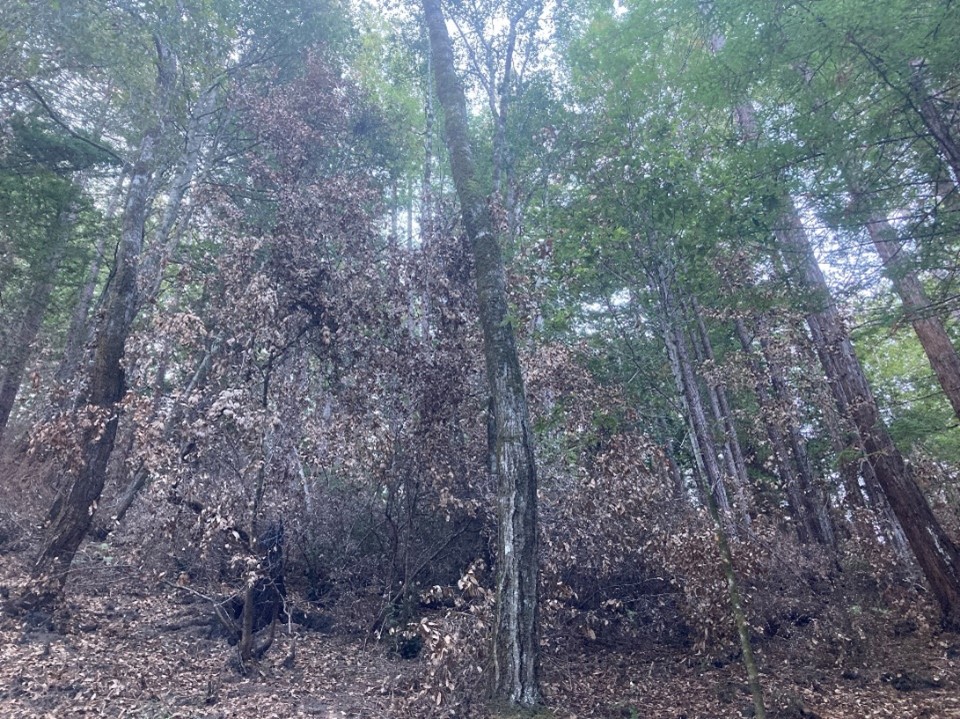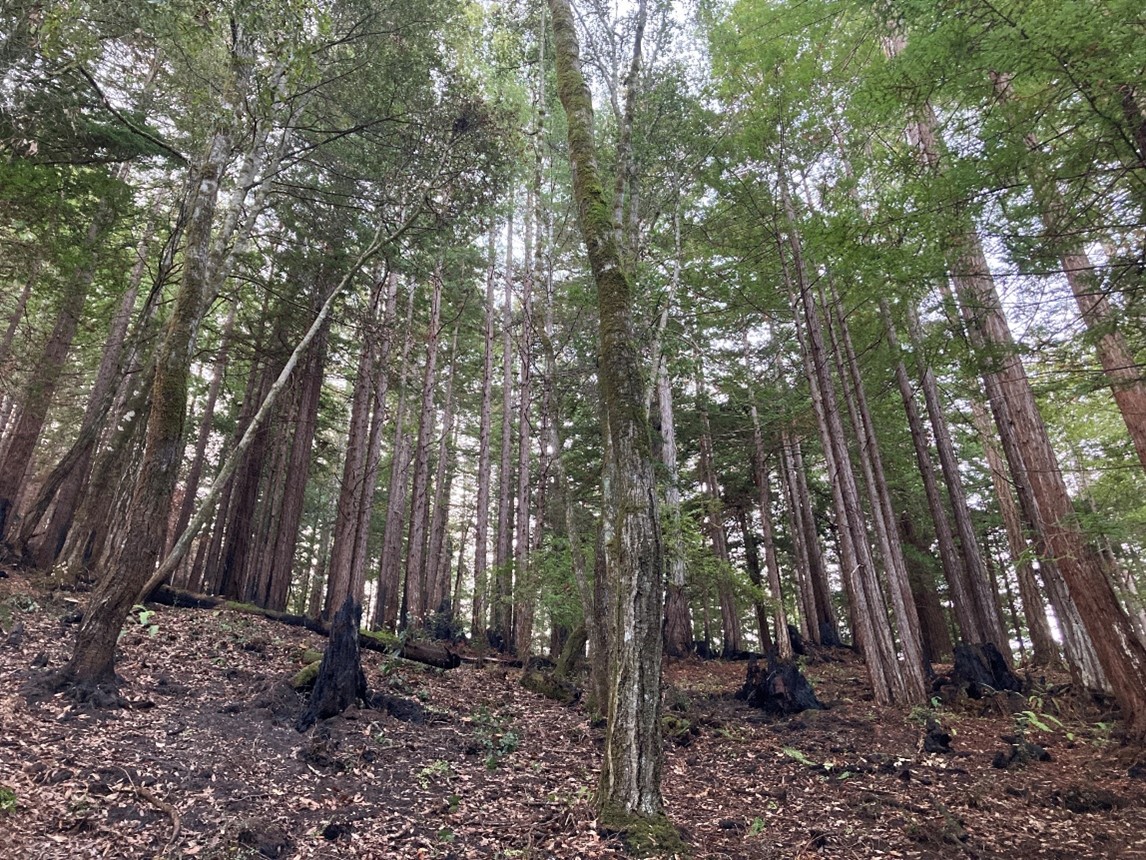Camp Butano Forest Health
Project Summary
In 2019 San Mateo Resource Conservation District, in collaboration with CAL FIRE and the Girl Scouts of Northern California, developed a high priority fuel reduction treatment project at the Girl Scouts of Northern California – Camp Butano Creek site for forest health purposes. Encompassing roughly 44 acres will be mechanically and manually thinned to improve forest health, reduce fuel load in case of catastrophic fire, and promote carbon sequestration goals.
Project Information
During the 2020 CZU Lightning Complex Fires in Santa Cruz and San Mateo counties, a significant portion of the property experienced low to moderate intensity fire, resulting in a high accumulation of dead, dying, and highly flammable understory vegetation. In the Fall of 2021, project activities began at the property, aiming to modify these fuels to be less flammable.
Treatment activities consisted of approximately 36.7 acres of mechanical treatments, which occurred predominately on slopes averaging 30% or less, as well as along ridges and existing road infrastructure on slopes greater than 40%. Masticators (machines used to mechanically grind and shred vegetation) were used to modify dense stands of understory vegetation and ladder fuels while maintaining a healthy overstory component. Understory vegetation under the canopy of trees was cut and masticated leaving root systems intact for resprouting. The manual and mechanical treatment crews utilized chainsaws and various other manual and mechanized tools to cut, clear, or prune herbaceous or woody species and ladder fuels, which connect surface fuels to canopy fuels. Manual treatments occurred over approximately 4.6 acres predominately near sensitive resources and important camp infrastructure. Additional manual treatment occurred on steep slopes between 40-50% that connect adjacent polygons.
Understory vegetation located in areas that experienced low severity fire during the 2020 CZU Lightning Complex Fires contains moderate fuel loads including dead and/or cured vegetation and a component of regenerative vegetation and tree sprouting. The removal of understory vegetation and ladder fuels in the tree fuel types sought to reduce the risk of future ground or surface fires spreading into the canopy.
Goals
This project supports the intent of the by:
- Proactively restoring forest health, improving ecosystem , and conserving working forests by conducting targeted fuel reduction
- Protecting upper watersheds where the state’s water supply originates by strategically placing our projects throughout the watershed
- Promoting the long-term storage of carbon in forest trees and soils through the reduction of dense understory vegetation thus promoting larger healthier stands of mature trees
- Minimizing the loss of forest carbon from large, intense wildfires, through reduction of ladder fuels and brush as well as through placement of fuel breaks along ridge tops to reduce the intensity of wildfires.
Timeline
Project activities began in September of 2021 and were completed in early December of 2021. Monitoring of the project site will continue throughout the next several years by RCD, consultants, and Girl Scouts of Northern California staff.
Partners
- CAL FIRE
- Girl Scouts of Northern California
*We would also like to thank Auten Resource Consulting for forestry consulting services as well as Community Tree Service, Inc., our prime contractor for the implementation of the project.
Funders
This project is made possible by a partnership between the San Mateo Resource Conservation District and the Girl Scouts of Northern California. Funding is provided by the California Department of Forestry and Fire Protection as part of the California Climate Investments Program, a statewide program that puts billions of Cap-and-Trade dollars to work reducing GHG emissions, strengthening the economy, and improving public health and the environment – particularly in disadvantaged . For more information, visit the California Climate Investments website at www.caclimateinvestments.ca.gov.
RCD Contact: David Cowman


